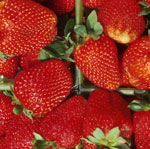Dear Umbra,
The tangerines I bought recently had this on the label: “Thiabendazole and/or orthopenylphenol and/or imazalil used as fungicides, and coated with food-grade shellac based wax or resin to maintain freshness.”
Presumably the shellac stays on the skin and does not affect the fruit, but what about the other products? What are these products and do we know what the impact of spraying or putting them on the fruit is, as well as the overall effect on the environment? Is organic better, as far as these chemicals are concerned?
Bruce
Kansas City, Mo.
Dearest Bruce,
Organic is better, as far as any chemicals are concerned. Organic certification has been the eater’s main guarantee against ingesting and polluting with chemicals for more than 30 years now. To be certified, organic growers must farm without antibiotics, hormones, synthetic pesticides, or fertilizers for three years prior to the first inspection of their farms and certification; and they abstain from such thereafter. In addition, organic growers choose sustainable, soil-building crop techniques, and often opt for barns with access to the outdoors.
The idea of food without chemicals has been so wildly popular, even the feds want to join the party. The U.S. Department of Agriculture’s national organic standards came into effect just last month, with a new sticker and a lot of press. The USDA makes no claims that organic food is better than conventional food, but I will freely make that claim. It is far, far better. Better in terms of ingesting chemicals, because there are few or none on or in it, and better in terms of overall effect on the environment. Practices excluded under the organic rules — sewage sludge as fertilizer, irradiation, genetic modification, confinement operations, to name a few — paint a stark picture of conventional agriculture.
Returning to the first part of your question, the chemicals you mention are fungicides. Chemicals are an expanding and leaking bulwark against the unbearable demands of our food system. Industry consolidation and economies of scale have driven large producers to monoculture — vast fields filled with only tangerines, only strawberries, only cattle housing — in which disease and pests run rampant and all crops are machine-harvested. Food travels thousands of miles from farm to table. No ripe produce could survive the industrial food economy, so food is shipped unripe, sprayed with substances to retard spoilage, and shellacked to look cute. Your tangerine may even have been dyed orange.

Berry high pesticide levels.
For specifics on pesticides that you notice on your food, you can always find a complete analysis on the U.S. EPA website. Imazalil is a probable carcinogen and potential farm-worker hazard, for example, but satisfies the testing criteria on other counts. Overall effect on the environment, your main query, is harder to quantify than effect on lab rats. For one thing, most foods are sprayed with multiple pesticides, as you’ll see if you visit the Environmental Working Group’s website, and cumulative effect is hard to measure. Each month, it seems, we discover new problems that may be a result of chemical pollution. Conventional agribusiness, and its cumulative burden of chemical tonnage, intensive tillage, and giant cesspools of hog excrement, is affecting human and ecological health in profound and perhaps unalterable ways. Soils are dead, workers are poisoned, groundwater is unsafe, and rural communities are eviscerated.
You may be gathering that I am pro-organic, and I am to a point. Over the past 30 years, the organic label has been the indicator of a saner food chain, and it still signals a virtually chemical-free route from seed to stomach. If organic food is not available near you, ask your grocer to carry it. If your budget can’t support it, either change your eating habits to involve fewer high-priced processed organic foods, or shop discerningly for conventional food. The EWG website keeps an updated list of foods with the highest pesticide residue. Buy from local farmers who use pesticides with restraint. Shopping organic may take a little effort, but you won’t find yourself wondering what you’re eating.
Quite seriously,
Umbra

